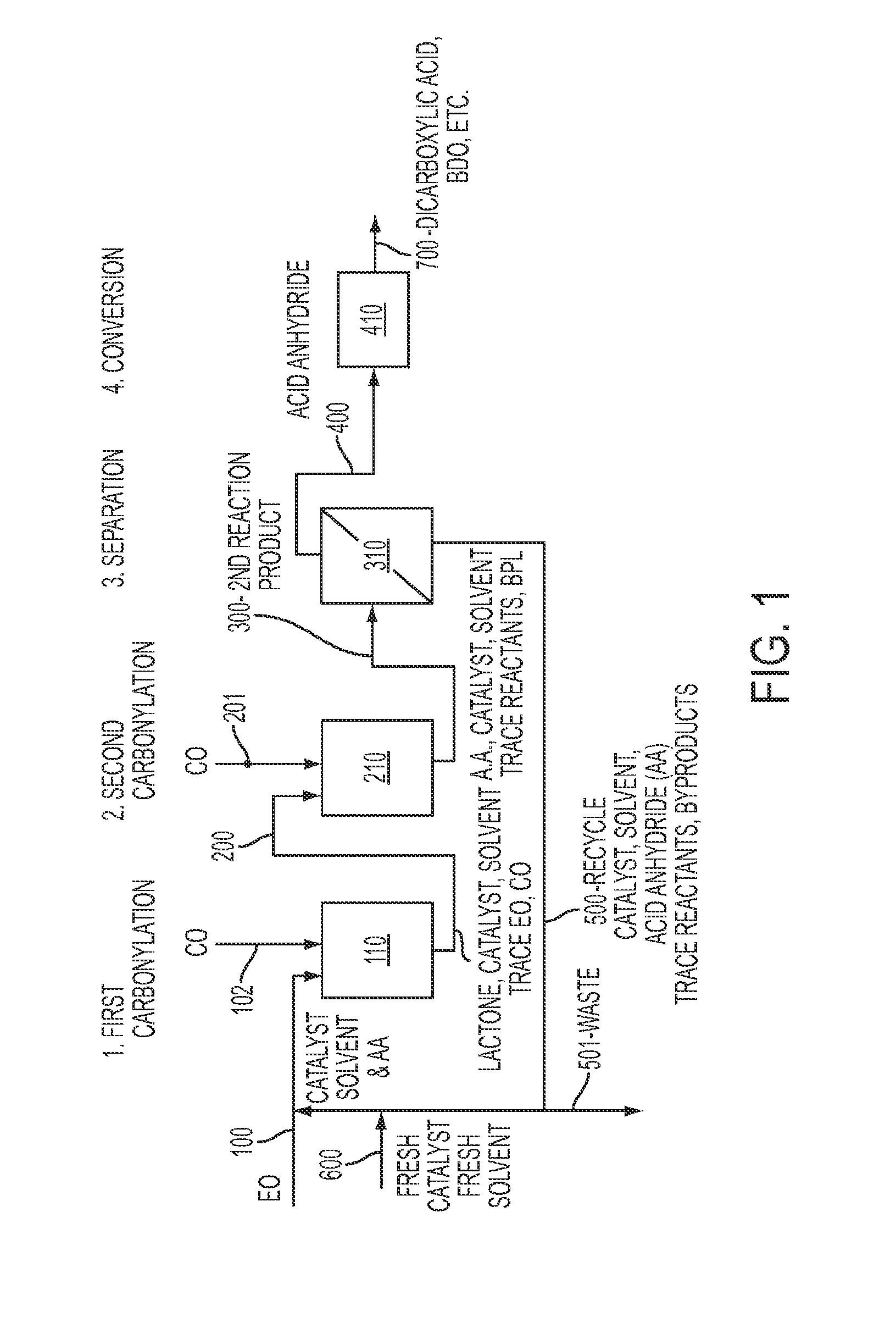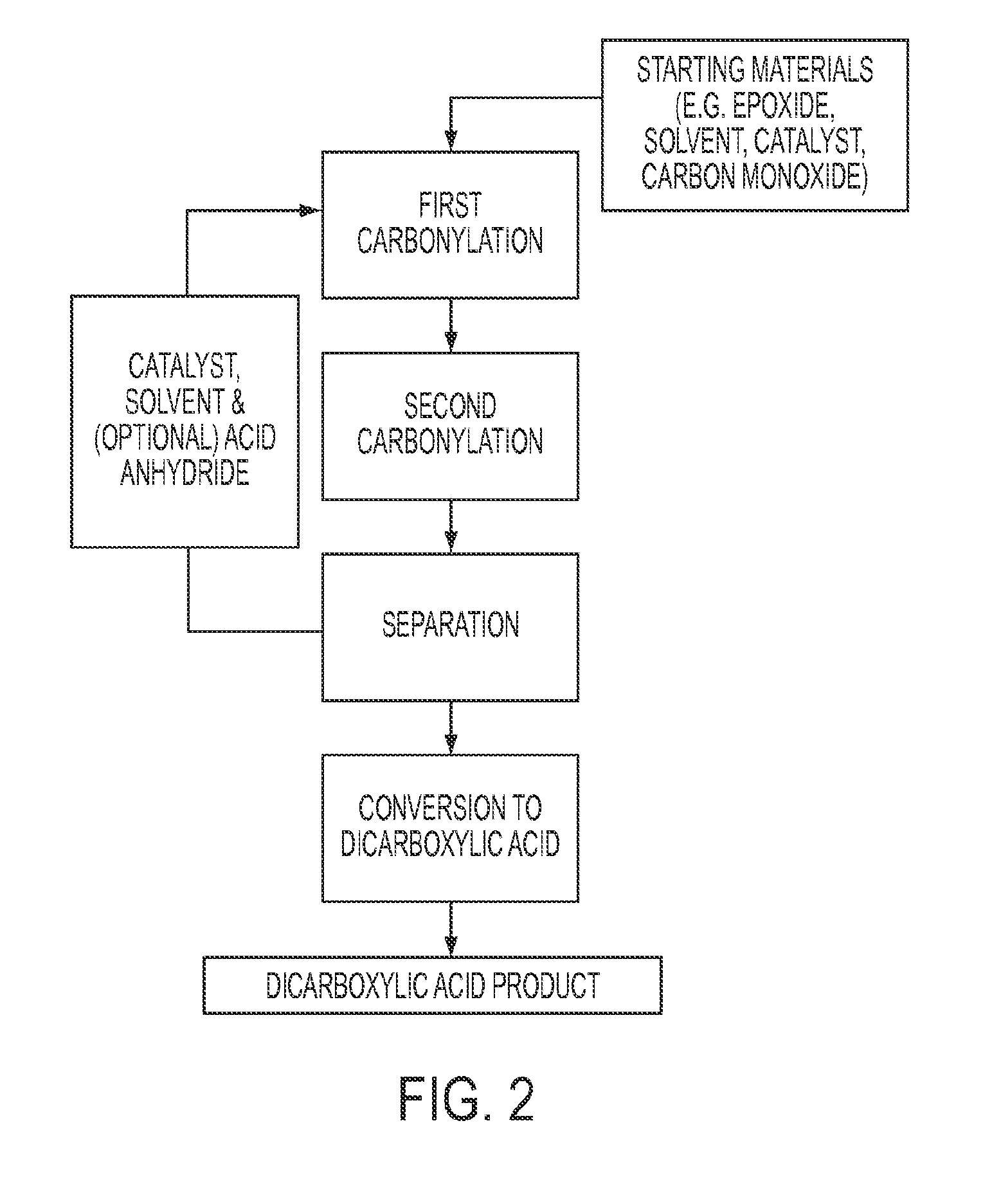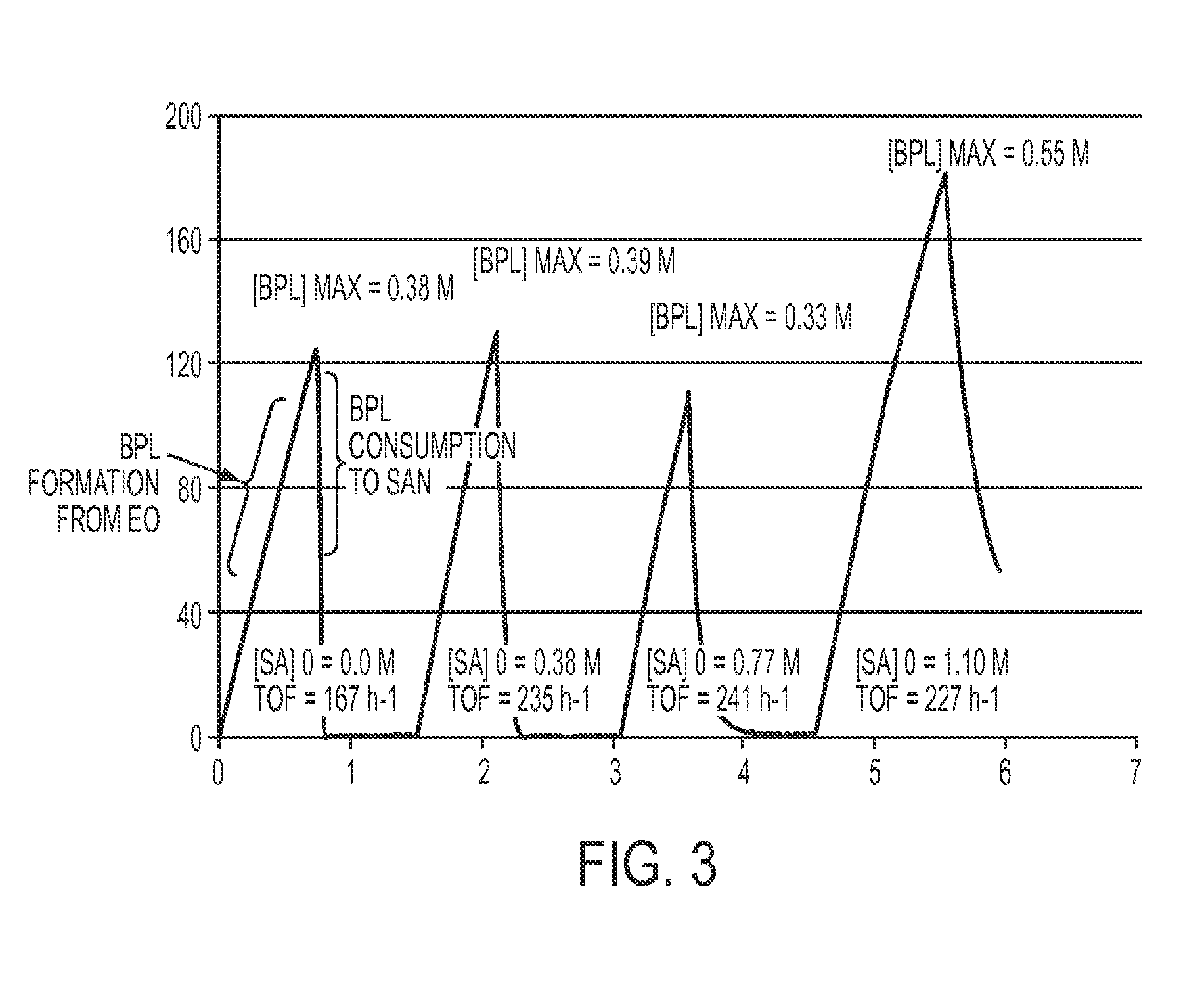Process for the production of acid anhydrides from epoxides
a technology of acid anhydride and epoxide, which is applied in the direction of organic compounds/hydrides/coordination complex catalysts, organic chemistry, physical/chemical process catalysts, etc., can solve the problems of low yield, many byproducts produced, and lack of generality, so as to increase the solubility of acid anhydride, and increase the solubility
- Summary
- Abstract
- Description
- Claims
- Application Information
AI Technical Summary
Problems solved by technology
Method used
Image
Examples
example 1
Recycling Reaction
[0230]In a nitrogen drybox, a 300 ml high pressure reactor, fitted with an in-line attenuated total reflectance infrared spectroscopy (“ATR IR”) probe was charged with [(TPP)Al(THF)2][Co(CO)4] catalyst (0.36 mmol; TPP=tetraphenylporphyrinato), sealed, then removed from the drybox. The reactor was then further charged with 114 mL of 1,4-dioxane under N2, mechanically stirred at 500 rpm, heated to 37° C., and pressured to 200 psi of carbon monoxide, CO. Ethylene oxide (“EO”) (120 mmol) was charged into a shot tank that was connected to the reactor. The shot tank was pressurized with 600 psi of CO, and EO was added to the reactor by opening the valve connecting the shot tank and the reactor. The reactor was stirred at 37° C. under 600 psi of CO for 20 h. The reaction was monitored by in-line ATR-IR. After the reaction, the reactor was vented to release CO. The reactor was brought into a nitrogen drybox, and opened. The reaction mixture containing crystalline SA was fi...
example 2
Multiple EO Addition
[0232]In a nitrogen drybox, a 300 ml reactor fitted with an in-line ATR IR probe was charged with [(TPP)Al(THF)2][Co(CO)4] catalyst (0.30 mmol; TPP=tetraphenylporphyrinato), sealed, then removed from the drybox. The reactor was then further charged with 97 mL of 1,4-dioxane under N2, mechanically stirred at 500 rpm, heated to 37° C., and pressured to 200 psi of CO. Ethylene oxide (34.8 mmol) was charged into a shot tank that was connected to the reactor. The shot tank containing ethylene oxide was pressurized with 600 psi of CO. Ethylene oxide was added to the reactor by opening the valve connecting the shot tank and the reactor. The reactor was stirred at 37° C. under 600 psi of CO. The reaction was monitored by in-line ATR-IR. After the beta-propiolactone is all converted to SA, CO pressure inside the reactor was reduced to 550 psi by venting CO. The shot tank was recharged with ethylene oxide (42.4 mmol), and pressurized with 600 psi of CO. The second shot of ...
example 3
5000-Fold Scale Up
[0234]In a first reactor 7.5 kg / hr of ethylene oxide is fed. The first reactor is operated at steady state conditions, with 1.5 M concentration of succinic anhydride present in the reactor volume. Additionally, 485 L / hr of solvent containing 1.5 mol / hr of [(TPP)Al(THF)2][Co(CO)4] catalyst (1.4 kg / hr) catalyst is fed to the reactor. The reactor is maintained at a pressure of 200 psig of carbon monoxide. The reactor is sized such that the feed and solvent have a residence time of at least 2.5 hours. (e.g., 1500 L in volume). Under these conditions, about 174 mole / hr of beta-propiolactone is produced. (12.5 kg / hr).
[0235]The beta-lactone is fed directly, with the solvent and catalyst, to a second reactor, also maintained at a pressure of 200 psig of carbon monoxide. The second reactor is sized such that reactants have a residence time of at least 15 minutes (e.g., 125 L in volume). The second reactor produces approximately, 174 mole / hr of succinic anhydride. (17.4 kg / h...
PUM
| Property | Measurement | Unit |
|---|---|---|
| pressure | aaaaa | aaaaa |
| pressure | aaaaa | aaaaa |
| pressure | aaaaa | aaaaa |
Abstract
Description
Claims
Application Information
 Login to view more
Login to view more - R&D Engineer
- R&D Manager
- IP Professional
- Industry Leading Data Capabilities
- Powerful AI technology
- Patent DNA Extraction
Browse by: Latest US Patents, China's latest patents, Technical Efficacy Thesaurus, Application Domain, Technology Topic.
© 2024 PatSnap. All rights reserved.Legal|Privacy policy|Modern Slavery Act Transparency Statement|Sitemap



